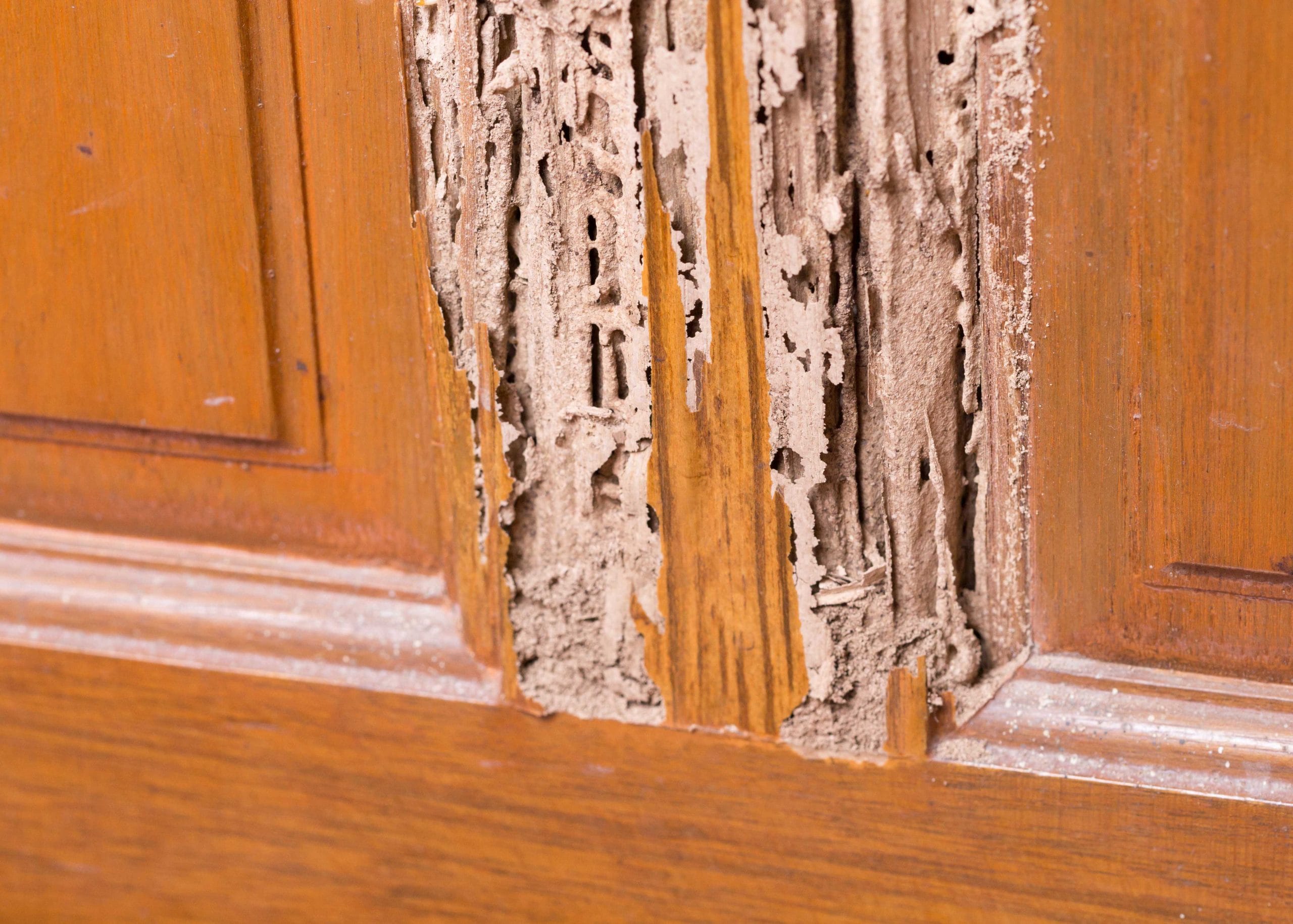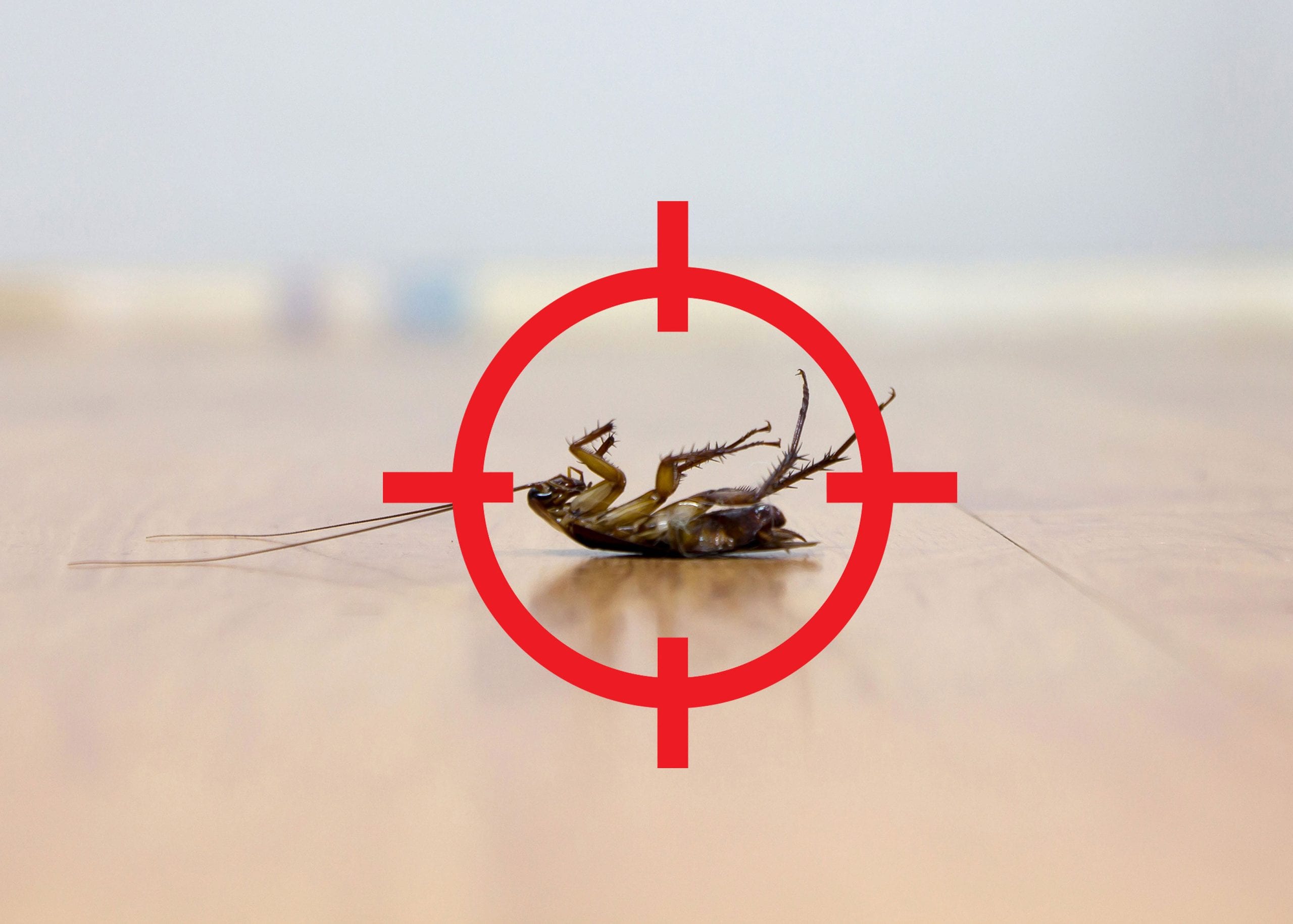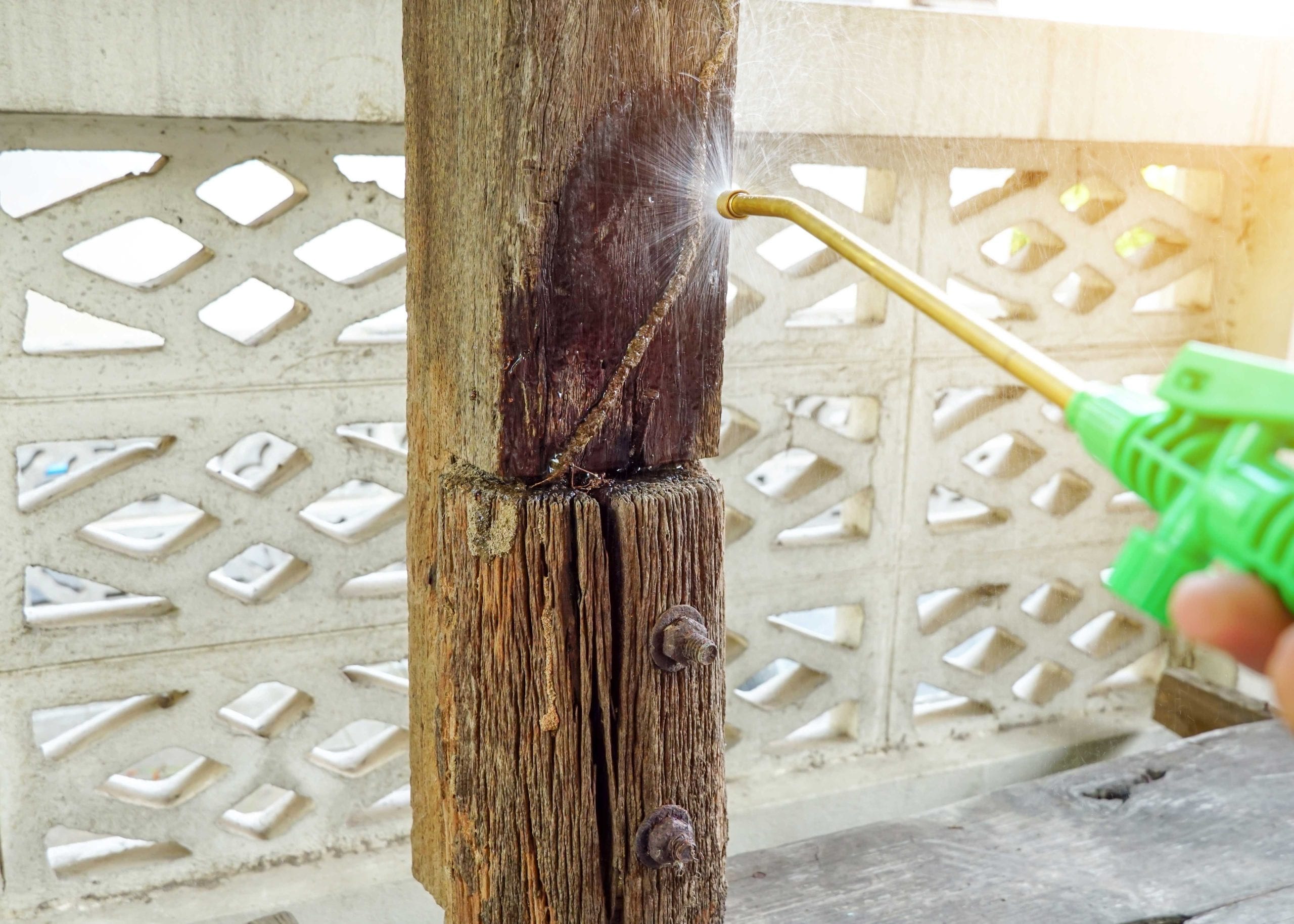Connecting you with a Wichita pro to get your fast, local termite removal estimate
1. Call our team or complete our local estimate form
Our termite removal network operates locally, which means that all calls and form completions are directly routed to experts in your area. You will only incur charges if you choose to proceed with one of our termite removal network professionals. Rest assured that your property will receive top-notch termite removal services from our trusted network of professionals.
2. Connect with a local Wichita termite removal expert
If you’re pressed for time, filling out our form is a convenient option to have one of our termite removal professionals get in touch with you at a later time. However, if you need to connect with a termite removal expert promptly, a phone call is the way to go. Our termite removal professionals are readily available to provide you with a estimate over the phone. In some cases, additional discovery may be necessary, and the termite expert may want to conduct some basic inspections before presenting an estimate.
Why it's important to hire a professional for termite control

Termites: A Comprehensive Guide to Detection and Management
Introduction
Termites, often referred to as “white ants,” are wood-damaging insects that pose a significant threat to structures, furniture, and woodwork. These pests can cause extensive damage and compromise the integrity of buildings if left undetected and untreated. This comprehensive guide will provide a thorough understanding of termites, their behavior, detection methods, and effective management strategies.
Types of Termites
There are several types of termites, but the most common species found in urban environments include:
Subterranean Termites
* Build their nests underground and travel through the soil to reach food sources. * Construct mud tubes to protect themselves from predators and the elements.
Drywood Termites
* Infest dry wood, such as structural timbers and furniture. * Do not require a source of moisture and can infest buildings in arid climates.
Signs of Termite Infestation
Early detection of termite infestations is crucial for minimizing damage. Watch for these telltale signs: * Small, dry tubes or tunnels made of mud or sawdust-like material. * Damaged wood with hollow-sounding areas. * Loose wallpaper or baseboards. * Buckling or sagging wooden structures. * Piles of tiny, white-colored fecal pellets (frass). * Swarmers (winged termites) on windowsills or in light fixtures.
Methods of Detection
Effective termite detection involves a combination of visual inspections and professional tools.
Visual Inspection
* Thoroughly examine wooden structures, furniture, and accessible areas for signs of infestation. * Use a flashlight to illuminate dark spaces and inspect areas with moisture accumulation.
Moisture Meters
* Measure moisture levels in wood to detect areas of potential infestation. * Higher moisture levels may indicate termite activity or underlying moisture issues.
Termite Detector Dogs
* Specially trained dogs can sniff out termite pheromones and locate infestations. * Provide a non-invasive and accurate method of detection.
Acoustic Sensors
* Monitor the sound vibrations of termites, which are inaudible to humans. * Can detect termite activity deep within wood structures.
Management and Treatment Options
Prompt treatment is essential to control termite infestations and prevent further damage.
Chemical Treatments
* Liquid termite treatments are applied around the perimeter of a building to create a barrier against termites. * Baiting systems use termite-attracting baits to eliminate colonies.
Physical Barriers
* Termite shields are metal barriers installed around foundations to prevent subterranean termites from entering. * Trenching and soil treatments can create a physical barrier against termites.
Heat Treatment
* Exposes the building to high temperatures to kill termites and their eggs. * A highly effective method, but can be expensive and disruptive.
Fumigation
* Involves releasing poisonous gas into a sealed building to eliminate all termites. * Requires significant building preparation and is typically used for severe infestations.
Do-It-Yourself vs. Professional Termite Services
While some homeowners may attempt to treat termite infestations themselves, it is highly recommended to seek professional assistance.
Benefits of Professional Services
* Licensed professionals have specialized knowledge and expertise. * Access to advanced detection tools and treatment methods. * Provide warranties and guarantees for their work.
Risks of DIY Treatments
* Incorrect identification of termites or type of infestation. * Improper application of chemicals or treatments. * Incomplete or ineffective treatment, potentially leading to ongoing damage.
Conclusion
Termites are a serious threat to buildings and wooden structures. By understanding their behavior and recognizing the signs of infestation, homeowners can take proactive steps to detect and manage these pests effectively. While DIY treatments may be tempting, it is always advisable to consult with a licensed pest control professional for accurate diagnosis, effective treatment, and ongoing pest monitoring.

Termites – The Silent Destroyers
Termites are wood-destroying insects that can silently inflict significant damage to homes and other wooden structures. These pests feed on cellulose, the primary component of wood, leaving behind a path of destruction that can go unnoticed for years.
Persistent, voracious, and often hidden, termites can cause extensive structural damage before their presence is detected. Understanding the telltale signs, preventive measures, and effective treatment options is crucial to safeguarding your property from these formidable foes.
The presence of termites can be an unsettling realization for homeowners. However, comprehensive knowledge and prompt action can mitigate the damage and restore peace of mind. Our team of experts has compiled this comprehensive guide to help you identify, prevent, and eliminate termite infestations effectively.
Signs of Termite Infestation
Early detection is paramount in preventing severe termite damage. Be vigilant for these telltale signs of termite activity:
- Hollow-Sounding Wood: Tap on wooden surfaces. Infested wood may sound hollow due to the termites’ excavations.
- Mud Tubes: Termites construct mud tubes to protect themselves from predators and the elements. These tubes, often found along foundations and walls, are a clear indication of an infestation.
- Discarded Wings: Termite swarmers shed their wings after mating. Discarded wings near doors, windows, or baseboards suggest a nearby termite colony.
- Buckling Wood: Termites weaken wood by consuming its cellulose, causing it to buckle and sag. This is often visible in floors, walls, or ceilings.
- Frass: Small, wood-colored pellets of termite excrement are a sign of active infestation. They may be found near baseboards, windowsills, or other areas where termites are present.
Preventive Measures against Termites
Prevention is always better than cure. Implement these effective measures to deter termites and protect your property:
- Eliminate Moisture: Termites thrive in moist environments. Fix leaky faucets, seal cracks in foundations, and ensure proper drainage around your home.
- Clear Wood Debris: Remove woodpiles, stumps, and other wood debris from your yard. These attract termites and provide them with a food source.
- Use Termite-Resistant Lumber: When building or renovating, opt for termite-resistant lumber such as redwood, cedar, or pressure-treated wood.
- Inspect Regularly: Conduct regular inspections of your home’s exterior and interior. Pay close attention to areas where termites are likely to enter, such as basements, crawl spaces, and attics.
Effective Termite Treatment Options
If termites have infiltrated your home, prompt action is essential. Professional termite treatment can effectively eliminate infestations and prevent further damage:
- Liquid Termiticides: These chemicals are applied to the soil around your home, creating a barrier that termites cannot cross.
- Baiting Systems: Termite baiting stations are placed around your property. Termites are attracted to the bait and carry it back to their colony, eliminating the infestation from within.
- Fumigation: In severe cases, fumigation may be necessary. This involves sealing your home and releasing a gas that kills termites and their eggs.
Protecting Your Home from Termites
By understanding the signs of termite infestation, implementing preventive measures, and seeking professional treatment when necessary, you can safeguard your home from these destructive pests. Remember, early detection and prompt action are key to preventing costly damage and maintaining the integrity of your property.
Our team of certified termite control specialists is dedicated to providing comprehensive and effective termite solutions. Contact us today for a thorough inspection and personalized treatment plan. Together, we can eliminate termites from your home and restore your peace of mind.

Termites: A Comprehensive Guide to Identification, Prevention, and Control
Termites, often referred to as “silent destroyers,” are social insects that reside in colonies and have the capacity to cause extensive damage to wooden constructions. Their diet primarily consists of cellulose, a substance found in wood and other plant materials. Given their preference for wood as their primary food source, termites have the potential to inflict substantial economic losses on homeowners and businesses alike.
Various species of termites exist, each exhibiting distinct characteristics and behaviors. However, they generally share certain common traits that facilitate their identification. These include:
- Small size: Termites are typically quite small, measuring only a few millimeters in length.
- Light coloration: They often appear pale in color, ranging from cream to brown.
- Straight antennae: Their antennae are straight and lack the sharp bends that are characteristic of ants.
- Termite wings: The wings of flying termites, or swarmers, are similar in size and shape, resembling elongated, narrow ovals.
Termites typically establish their colonies either within the soil or inside wooden structures. Subterranean termites are known for building their nests underground, and they reach wooden structures through tunnels constructed in the soil. Drywood termites, on the other hand, establish their nests directly within the wood itself.
Detecting termite infestations at an early stage is crucial to minimizing potential damage. Several signs and symptoms may indicate the presence of termites in your property, such as:
- Hollow-sounding wood: Tapping on wood affected by termites may produce a hollow sound.
- Mud tubes: Subterranean termites often create mud tubes on the surfaces of foundations, walls, and other areas to provide a protected pathway to food sources.
- Discarded wings: Swarmers shed their wings after mating, and these discarded wings can be found near windows, doors, or other entry points.
- Termite droppings: Termites produce small, dark pellets of fecal matter known as frass, which may accumulate in areas where they are active.
Preventing termite infestations is crucial for safeguarding your property. Several measures can be implemented to minimize the risk of termite damage, including:
- Eliminating moisture sources: Termites thrive in moist environments, so controlling moisture levels around your property is essential.
- Sealing entry points: Sealing cracks and gaps in foundations, walls, and other areas can help prevent termites from entering your home or business.
- Maintaining a barrier: Creating a physical barrier between wooden structures and the soil can deter termites.
- Using treated wood: Utilizing wood treated with termite-resistant chemicals can further reduce the risk of infestation.
Controlling termite infestations requires a comprehensive approach that may involve various methods, such as:
- Termite baiting systems: Baiting systems lure termites to feeding stations containing slow-acting insecticides, which are then carried back to the colony and spread among other termites.
- Liquid treatments: Liquid termiticides are applied to the soil around the foundation of a structure to create a chemical barrier.
- Fumigation: In severe cases, fumigation may be necessary to eliminate an entire termite colony using toxic gases.
If you suspect a termite infestation, consulting a qualified pest control professional is highly recommended. They possess the expertise and resources to accurately identify the species of termites, assess the extent of the infestation, and recommend the most appropriate treatment plan to effectively eliminate the problem.
At [Company Name], our skilled technicians are committed to providing comprehensive termite control solutions tailored to your specific needs. Our services encompass termite inspections, non-invasive monitoring systems, advanced treatment methods, and ongoing protection plans.
Contact us today for a complimentary termite inspection. Together, we can safeguard your property from the damaging effects of these silent destroyers and ensure its longevity.
Get Your Local EstimateWhy you need Wichita's expert termite removal services
Why termite removal should be your top priority: protecting your home from termites As a homeowner in Wichita, it’s crucial to seek professional termite removal services to safeguard your property and avoid costly damages down the line. Termites can wreak havoc on your home’s structural integrity and cause significant damage that may not be apparent until it’s too late. Regular termite inspection and removal by a professional can prevent such issues and ensure the safety of your home. Failure to do so could result in costly repairs and even potential safety hazards. By partnering with a professional termite removal service in Wichita, you can identify potential problems early on and mitigate them before they escalate. In short, enlisting the help of a professional termite removal service is a necessary step for homeowners in Wichita who want to protect their homes and avoid costly damages.
